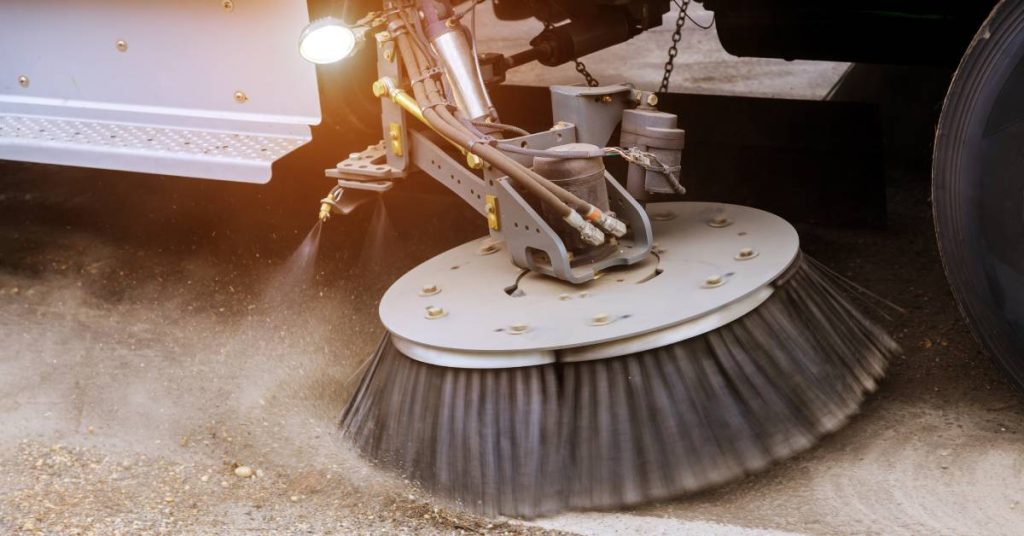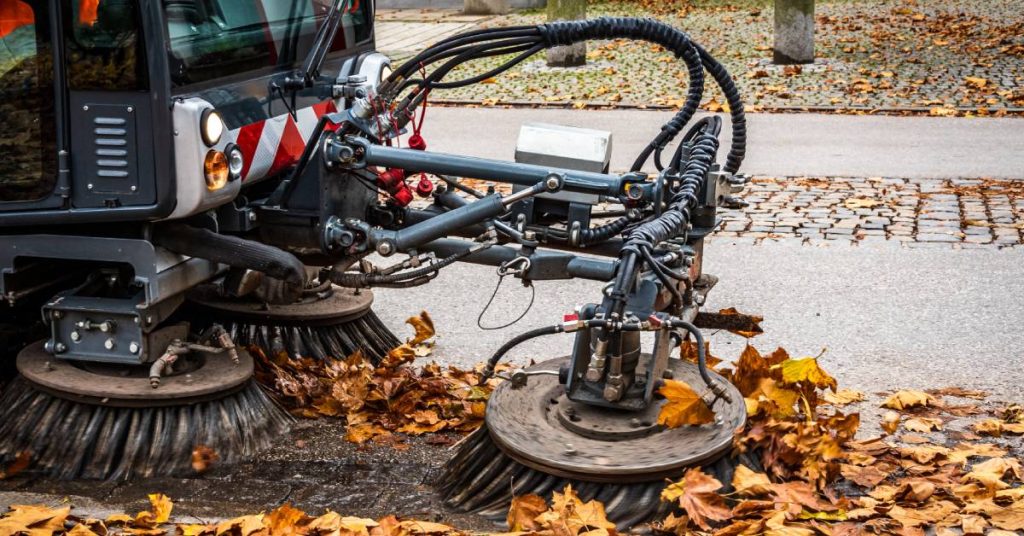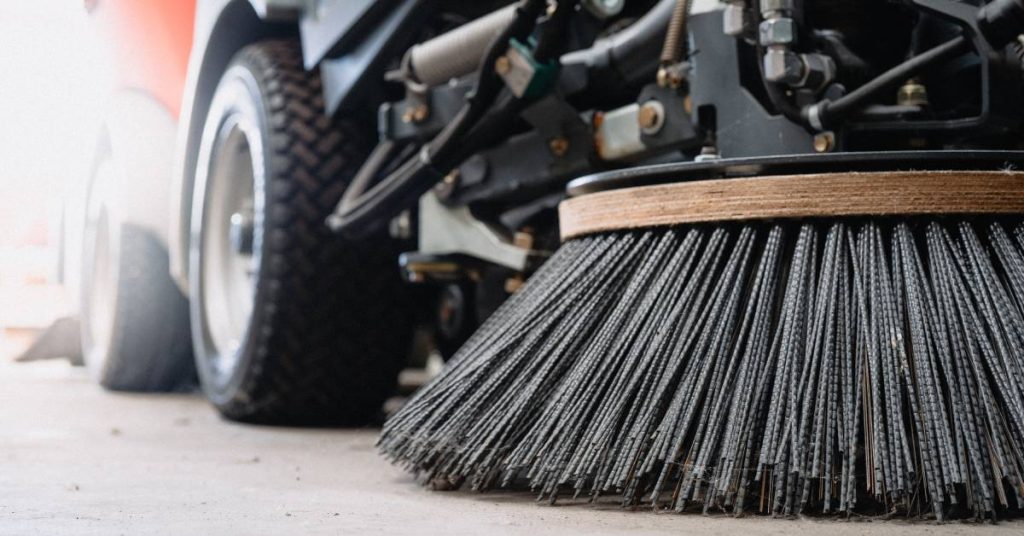With concern about the environment on the rise, people are focusing more on air quality and municipal efforts to reduce pollution. Cities have more cars and thus more possibilities for irritants in the air, so they need ways to safeguard public health and improve air quality for their residents.
Among the many approaches available, one often-overlooked solution lies right beneath our feet: street sweepers. These vehicles, which already serve an invaluable service by keeping our roads clean, play a secondary role in helping cities reduce and combat air pollution.
CPM Sweeping does its part to help keeping things clean and aid the environment, and we’re here to go over ten ways street sweepers can help cities reduce air pollution. By understanding the basics of preventing these irritants from entering the air and minimizing pollution, we can do our part and help cities become cleaner, more sustainable places to live.
1. Prevents Dust From Entering the Air
Street sweepers are especially effective at addressing one of the lesser-discussed pollutants: dust particles. Several factors send dust into the air like vehicles, human activity, or just the wind, which all contribute to pollution in urban environments.
Inhaling these particles can cause respiratory issues among people living in cities. Street sweepers help remove this dirt and debris from the roadways, significantly reducing the amount that winds up in our air. By reducing the amount of dust that becomes airborne, cities can help lower ambient concentrations of harmful particulate matter in their atmosphere.
2. Collects Debris That Contains Pollutants
Debris on city streets often contains pollutants such as motor oil, chemicals, and heavy metals. Failing to collect these contaminants gives them time to degrade into finer particles that mix into the air or pollute local waterways whenever it rains.
Modern street sweepers not only gather visible litter but also address smaller, pollutant-laden debris. This measure eliminates another potential source of airborne pollution. Cities that maintain regular street sweeping schedules benefit from cleaner roadways and experience less pollutant dispersal into the air and surrounding environment.
3. Reduces Vehicle-Generated Dust
Vehicles are major contributors to air pollution in urban environments. They not only emit harmful gases but also kick up dirt, grit, and fine particles from the roads on which they travel.
Constant flows of heavy traffic repeatedly kick up this dust, leading it to suspend in the air we breath. Street sweepers reduce this problem by consistently cleaning road surfaces, reducing the amount of material passing vehicles can kick up.

4. Prevents Resuspension of Road Dust
Road dust is a significant contributor to airborne particulate matter in many cities. It originates from sources such as construction activities, tire wear, and debris carried by wind. Once it settles on the ground, the act of driving or walking over it can resuspend it into the air.
Street sweepers combat this by regularly removing road dust from high-traffic areas, limiting its ability to re-enter the atmosphere. These sweepers serve as a reliable tool for improving air quality in densely populated regions like cities.
5. Promotes More Effective Drainage Management
One of the ways that street sweepers can help cities reduce air pollution is by enhance the efficiency of urban drainage systems. Without regular cleaning, debris and pollutants often accumulate and block drainage channels.
Blocked drains lead to stagnant water, which can create more pollutants and foul odors that fill the city environments. Leaving clean roads and unblocked drains allows street sweepers to keep things from stagnating and creating unpleasant environments.

6. Minimizes Construction-Related Air Pollution
Cities constantly undergo construction projects, which typically generate a significant amount of dust and debris. These fine particles can drift into neighboring streets and increase air pollution levels in the vicinity.
Street sweepers utilized advanced filters and water systems to help manage these issues by cleaning up construction site residue. While not every construction site hires street sweepers to keep things clean, cities can reward or prioritize this practice, making the air and water cleaner for those around the site.
7. Enhances Cooperation With Air Pollution Regulations
Governments often establish air quality standards and implement programs to reduce urban pollution. While larger interventions, such as emission controls on vehicles and factories, garner most of the attention, street sweepers serve as a practical everyday tool that aligns with these broader initiatives.
City agencies can help reduce air quality by implementing advanced, efficient sweeping machinery to clean up their municipal areas. Going above and beyond to promote a healthy city can do much more than simply adhering to environmental regulations alone.
8. Improves Safety and Efficiency of Air Pollution Management Measures
Street sweeping forms a critical component of broader air quality management strategies. By maintaining cleaner streets, they complement other efforts like tree planting and public transit initiatives designed to reduce overall emissions.
Cleaner streets also make it more efficient for other environmental technologies, such as air quality sensors, to function accurately. The data we collect from these sensors can help us identify problem areas and put them into practice when creating pollution-reduction strategies.
9. Encourages More Urban Green Spaces
Clean streets often encourage city planners to consider additional green spaces and pedestrian-friendly walkways. Green spaces not only improve the aesthetic appeal of cities but also act as natural air filters by capturing airborne particulates and releasing fresh oxygen.
Street sweepers can do their part to keep these roads and pathways clean and clear of obstructions. These practices not only help reduce pollution but aid in aesthetics and make these areas healthier and more pleasant to live in.
10. Adapts to Changing Environmental Challenges
As street sweeper technology evolves, we’re seeing new and sophisticated tools and technologies to address environmental challenges. Some machines operate with minimal emissions themselves, making them clean up even more than they contribute to ongoing pollution.
Additionally, advances in technology now allow sweepers to capture particles as small as ten microns, which can deeply penetrate into human lungs. These advancements indicate that street sweepers are evolving to become even more effective in combating urban air quality problems.
For cities aiming to improve their air quality and enhance public health, adopting a robust street sweeping program is essential. As a municipal street sweeper, CPM Sweeping is committed to providing comprehensive services that tackle air pollution right at its source. Contact us today to learn how our services can contribute to a more sustainable and breathable city atmosphere.

